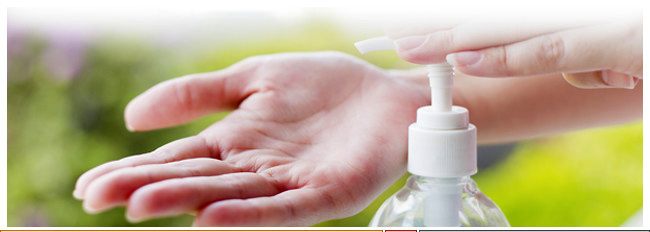
Call 1-631-753-8390 or Contact Us - We're Happy to Help!
Please choose a body region on the right for you to pin point the problem area of your body.

Shop by Condition

Shop by Brand
Why should I read this Q&A?
The emergence of an Ebola virus disease (EVD) outbreak in West Africa is causing concern among health authorities because the deadly disease is being transmitted in communities and healthcare settings in cities and rural areas in four West African countries: Guinea, Liberia, Nigeria and Sierra Leone.
The disease, which causes severe hemorrhaging and can kill up to 90% of those infected, is spread by direct contact with the blood and body fluids of infected animals or people.
According to World Health Organization (WHO), 1,323 cases have been reported, including 729 deaths since March 2014 (as of July 27, 2014). The Governments of affected countries are working closely with WHO and other partners on measures to control the outbreak.
As this is a rapidly changing situation, the number of reported cases and deaths are subject to change daily.
What is Ebola virus disease (EVD)?
EVD is a severe, infectious, often-fatal disease in humans and nonhuman primates (monkeys, gorillas, and chimpanzees) caused by infection with Ebola virus. The infection is transmitted by direct contact with the blood, body fluids and tissues of infected animals or people.
Who is most at risk?
In areas where an outbreak occurs, those most at risk are healthcare workers, family members or others in close contact with infected people and mourners who have direct contact with the bodies of the deceased as part of burial ceremonies. Additionally, in West Africa, hunters in rain forests who come in contact with infected animal carcasses are also at greater risk of infection.
More research is needed to understand if some groups, such as immune-compromised people or those with other underlying health conditions, are more susceptible than others to contracting the virus.
Exposure to the virus can be controlled through the use of protective measures in clinics and hospitals, at community gatherings, or at home.
Can the disease be prevented?
Currently there is no vaccine for EVD. Raising awareness of risk factors and measures people can take to protect themselves is the only way to reduce illness and deaths from EVD at this time. Protective measures include using appropriate protective gear and taking precautionary measures such as practicing good hand hygiene.
What is the risk of international spread of EVD by travelers?
According to WHO, the risk of spread to travelers to additional countries in the immediate West Africa region is high (i.e. countries bordering on/near Guinea, Liberia, and Sierra Leone); in the subregion is moderate; and overseas is low.
Does WHO have recommendations for healthcare workers in high risk areas?
WHO recommends that healthcare workers in West Africa follow Standard Precautions in Health Care, basic infection control precautions, published by WHO, to reduce the risk of transmission of bloodborne and other pathogens. In addition to providing precautionary measures such as the use of personal protective equipment, the importance of hand hygiene in healthcare is emphasized. Included in the precautions:
The Standard Precautions also provide guidance on when hand hygiene is important:
Are soaps and PURELL Hand Sanitizer products effective against EVD?
Ebola viruses are high risk pathogens that must be contained and are not readily available for laboratory testing.
As of today, we are not aware of any soap products or hand sanitizers that have been tested against Ebola viruses, including PURELL Hand Sanitizer and GOJO soaps. However, it is important to note that the Ebola virus is an enveloped virus. Enveloped viruses in general are easily killed or inactivated by alcohol.
Related Articles
<< World Health Organization Regarding the Ebola Outbreak
<< Hospital Checklist for Ebola Preparedness
<< Hand Hygiene Recommendations and the Use of ABHR by Agency
Get $10 off your next order when you sign up to receive our email newsletter.*
Simply enter your email address below!
*Minimum order value of $100. Valid email address to qualify.






